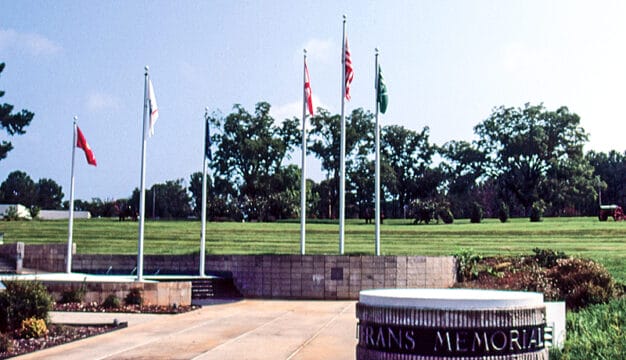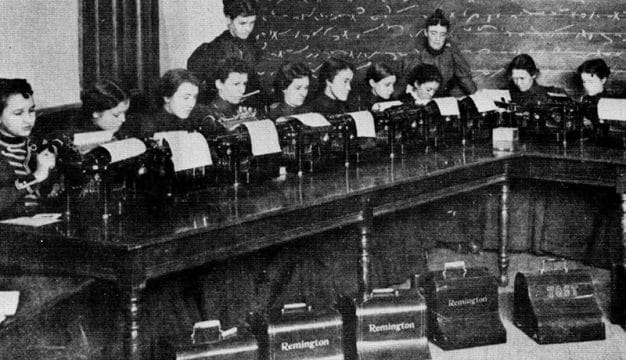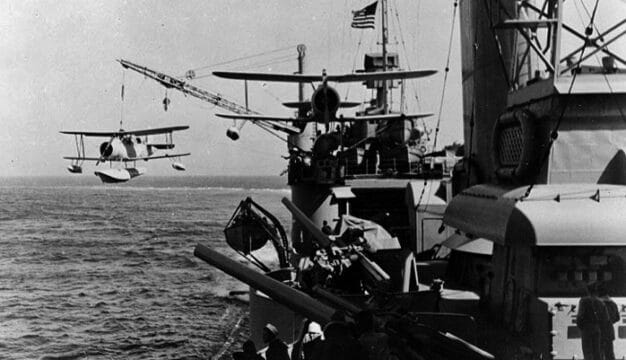Eugene Allen Smith
Eugene Allen Smith (1841-1927) was a professor, geologist, and naturalist who traveled by mule-drawn wagon throughout Alabama after the Civil War to find natural resources that could be used to develop industry in the state. His efforts in working with the state legislature also resulted in permanent funding for the Geological Survey of Alabama and a building, now the Alabama Museum of Natural History, on the University of Alabama campus designed by Smith to house his collections and the collections donated by others, as well as classrooms and laboratories for students.
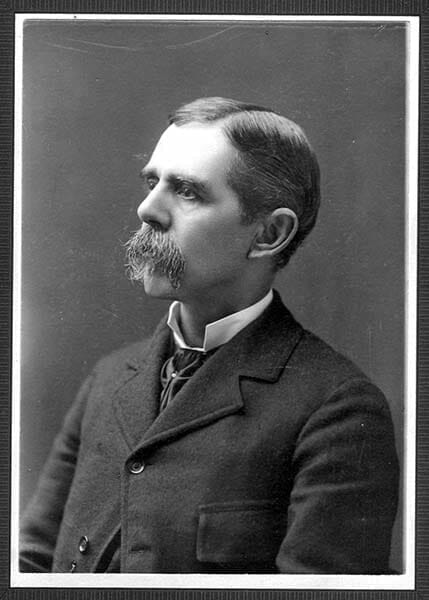 Eugene Allen Smith
Smith was born in Washington Ferry, Autauga County, on October 27, 1841, to Samuel Parrish Smith, a medical doctor, and Adelaide Allen Smith. Of his five siblings, Smith was especially close to his sister, Julia, who married Merrill Edward Pratt Sr., nephew and adopted son of industrialist Daniel Pratt. By 1850, the family had moved to Prattville, also in Autauga County, where Smith attended private school until enrolling at Central High School in Philadelphia, Pennsylvania. In 1862, after earning a bachelor of science degree from the University of Alabama, he served in the Confederate Army with the rank of private, most notably taking part in the battle of Perryville, Kentucky. He then was assigned to teach military tactics at the University of Alabama, where he witnessed the burning of the campus by federal forces.
Eugene Allen Smith
Smith was born in Washington Ferry, Autauga County, on October 27, 1841, to Samuel Parrish Smith, a medical doctor, and Adelaide Allen Smith. Of his five siblings, Smith was especially close to his sister, Julia, who married Merrill Edward Pratt Sr., nephew and adopted son of industrialist Daniel Pratt. By 1850, the family had moved to Prattville, also in Autauga County, where Smith attended private school until enrolling at Central High School in Philadelphia, Pennsylvania. In 1862, after earning a bachelor of science degree from the University of Alabama, he served in the Confederate Army with the rank of private, most notably taking part in the battle of Perryville, Kentucky. He then was assigned to teach military tactics at the University of Alabama, where he witnessed the burning of the campus by federal forces.
With the war’s end, Smith borrowed money from a relative and traveled to Europe, where he earned a doctorate from Heidelberg University in Germany in 1868. For the next three years, he worked in Oxford, Mississippi, as assistant state geologist and professor of chemistry at the University of Mississippi. When the University of Alabama reopened in 1871, he returned to Tuscaloosa as professor of agricultural chemistry and mineralogy. Smith married Jane Meredith Garland, daughter of the wartime president of the University of Alabama, Landon Garland, on July 10, 1872; they would have five children. During his years at the university, in addition to teaching, he devoted his energies to organizing the university’s symphony orchestra (in which he played second violin), rebuilding the library collection, and helping found the athletic program. For Field Day each year, he organized sporting events and served as judge. An enthusiastic supporter of football and baseball, he was often photographed with the teams.
Soon after his return to Alabama, Smith pressured the state legislature to reactivate the state geologist position, which had fallen dormant in 1858 after the death of Michael Tuomey, the first state geologist, and the onset of the Civil War. Smith believed that poverty-stricken Alabama’s recovery from the economic devastation of the Civil War and its aftermath would depend on an industry-based economy rather than agriculture. In 1873, the legislature appointed Smith state geologist, without salary, and set him the task of traveling during the summer months throughout the state searching for resources that could be used by industry. His resulting reports and articles, studied by northern industrialists and others seeking investment opportunities, led to the founding and growth of multiple industries, including coal, iron, cement, fertilizer, soapstone, water power, graphite, mica, kaolin, and many others. Men who became the industrial giants of the future city of Birmingham, including Truman Aldrich, Henry DeBardeleben, and James Withers Sloss, often looked to Smith for advice.
Smith’s 1879 survey and evaluation of the Warrior River from Tuscaloosa to Birmingham for the federal government paved the way for construction of the lock and dam system that made available year round the natural resources of the area to the markets of the world. He used his political skill and his friends’ influence with Congress in Washington to get legislation passed allocating 46,080 acres of federal land to Alabama in reparation for the burning of the University of Alabama; beginning in 1885, he served on the three-man commission to choose the lands. In subsequent years, the university sold some of the land and used the income for various expenses. From the corrections to inaccurate maps he made during his travels, he produced a map of Alabama, published in Berney’s Handbook of Alabama in 1892, so exact that it endured until 1926 as the standard work of its kind. Smith cofounded the Alabama Industrial and Scientific Society in December 1890.
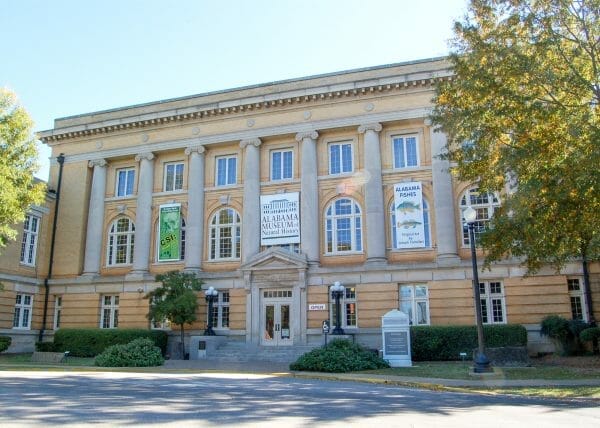 Alabama Museum of Natural History
A knowledgeable botanist, he collaborated with Mobile scientist Charles Mohr to publish the first complete listing of Alabama plants, several of which Smith himself discovered. Early in his travels he had begun collecting plant, animal, and mineral specimens and Native American artifacts in the hopes of one day setting up a natural history museum. He achieved that goal in 1910, when the building was constructed on the UA campus. Over Smith’s protests, it was named Eugene Allen Smith Hall. Several prominent men donated outstanding collections to the museum because of their high regard for Smith. The Mobile Register reported that Truman Aldrich gave his own extensive shell collection as well several other collections that he had acquired. He also donated many cases of rare books on conchology and other branches of science. Joseph W. Spencer, former state geologist of Georgia and a noted botanist, donated several collections in honor of Smith, including a valuable collection of fossils and natural history specimens.
Alabama Museum of Natural History
A knowledgeable botanist, he collaborated with Mobile scientist Charles Mohr to publish the first complete listing of Alabama plants, several of which Smith himself discovered. Early in his travels he had begun collecting plant, animal, and mineral specimens and Native American artifacts in the hopes of one day setting up a natural history museum. He achieved that goal in 1910, when the building was constructed on the UA campus. Over Smith’s protests, it was named Eugene Allen Smith Hall. Several prominent men donated outstanding collections to the museum because of their high regard for Smith. The Mobile Register reported that Truman Aldrich gave his own extensive shell collection as well several other collections that he had acquired. He also donated many cases of rare books on conchology and other branches of science. Joseph W. Spencer, former state geologist of Georgia and a noted botanist, donated several collections in honor of Smith, including a valuable collection of fossils and natural history specimens.
Gov. Emmet O’Neal in 1911 appointed Smith to the newly created five-man Alabama Highway Commission. In 1912, Smith was elected president of the Geological Society of America. In 1920, he worked with Alabama senator Oscar Underwood to establish a metallurgical research experiment station at the university under the auspices of the U.S. Bureau of Mines. Another invaluable legacy to Alabamians was a photographic record he began in 1885, documenting through his camera the state’s development during that critical period of its history. These photographs are now housed in the Hoole Special Collections Library at the University of Alabama.
Shortly before his death, Smith secured a $50,000 annual appropriation from the Alabama Legislature for the Geological Survey of Alabama, providing financial security for the organization Smith had served for most of his life. Smith died on September 7, 1927, and was buried in Evergreen Cemetery in Tuscaloosa.
Further Reading
- Adams, Charles Edwards. Blocton: The History of an Alabama Coal Mining Town. Brierfield, Ala.: Cahaba Trace Commission, 2001.
- Armes, Ethel. The Story of Coal and Iron in Alabama. 1910. Reprint, Leeds, Ala.: Beechwood Books, 1987.
- Henderson, Aileen Kilgore. Eugene Allen Smith’s Alabama: How a Geologist Shaped a State. Montgomery, Ala.: NewSouth Books, 2011.
- Jones, Walter B., and Roland M. Harper. History and Work of Geological Surveys and Industrial Development in Alabama. Wetumpka, Ala.: Wetumpka Printing Company, 1935.
